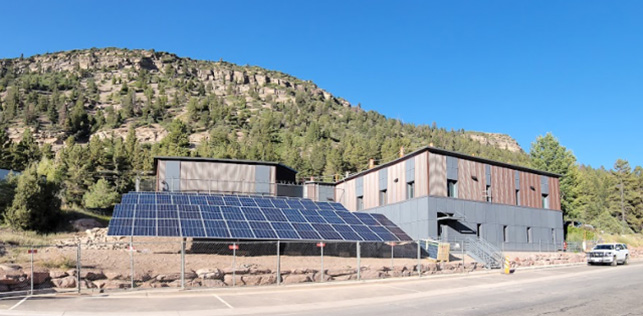
San Miguel Power Association is exploring community-scale microgrids to boost resiliency for four remote towns in Colorado’s San Juan Mountains where blizzards and avalanches have threatened reliability.
Silverton, one of those communities, sits nearly 10,000 feet above sea level along a single mountain road. Last winter it was hammered by what locals call a “snowpocalypse” that took out electricity for several hours.

“The snow was blowing sideways. It really was blizzard conditions,” said Alex Shelley, communications executive for the Nucla-based co-op. “All access to the town was cut off, and folks were cold.”
Fortunately, SMPA had seen the forecast and, to stem an eventual outage, sent a lineworker to Silverton prior to the storm to work with another lineworker, one of the town’s 650 residents. When disaster struck, the pair managed to repair the line and restore electricity within several hours. They later received a commendation from the mayor.
But the experience spurred the co-op to find a solid resiliency solution to meet the power needs of the whole community during an emergency.
“We’re owned by our members, and we are laser-focused on providing the best service that we can for them, and that includes reliability and safety and resiliency as well as affordability and environmental responsibility,” said Shelley. “All of those are parts of our mission, and microgrids have the potential to tick every one of those boxes.”
Microgrids provide temporary, limited electricity by employing small local generation and batteries for energy storage when there is a disconnection from the main power grid.
Electric co-ops nationwide have installed and operated custom microgrids for targeted resiliency at medical facilities, military bases, schools or specific neighborhoods during power outages.
SMPA has assisted with microgrids for the San Miguel County Sheriff’s Office and a school in Telluride, but “the ones we are proposing are all meant to back up the power needs of the entire community so if the grid went down, that system could isolate and produce power,” said Shelley.
In addition to Silverton, SMPA is proposing microgrids to provide four hours of power to the towns of Ophir, population 195; Rico, population 347; and Ridgway, with over 1,200 residents.
These larger microgrids could help people stay warm and charge their devices until repairs to the power lines can reconnect their communities to the grid, Shelley said.
The co-op obtained grant money for the Silverton microgrid from the Department of Energy’s Office of Clean Energy Demonstrations and from the state Department of Local Affairs for the other three.
SMPA is working with a consultant to propose the microgrid projects and account for variables of size, location and capabilities. “There’s no one-size-fits-all solution,” said Shelley.
After pre-build design, engineering and community outreach is completed this year, SMPA hopes to obtain construction grants from the state to break ground in 2025.
“For several reasons like increasing frequency and intensity of extreme weather events, proliferation and decreasing costs of DERs, microgrids are becoming essential building blocks of the future of the grid,” said Tolu Omotoso, NRECA energy solutions director. “Microgrids offer multiple ways to integrate renewables, improve reliability and support resilience of remote communities. It’s great to see electric cooperatives leveraging federal and state funding opportunities to develop microgrids to serve their members.”
Co-ops exploring microgrids can join NRECA’s Microgrid Consortium for unique opportunities to share ideas and lessons learned from deployments and find out about funding programs and ways to leverage innovative partnerships with technology.
Cathy Cash is a staff writer for NRECA.